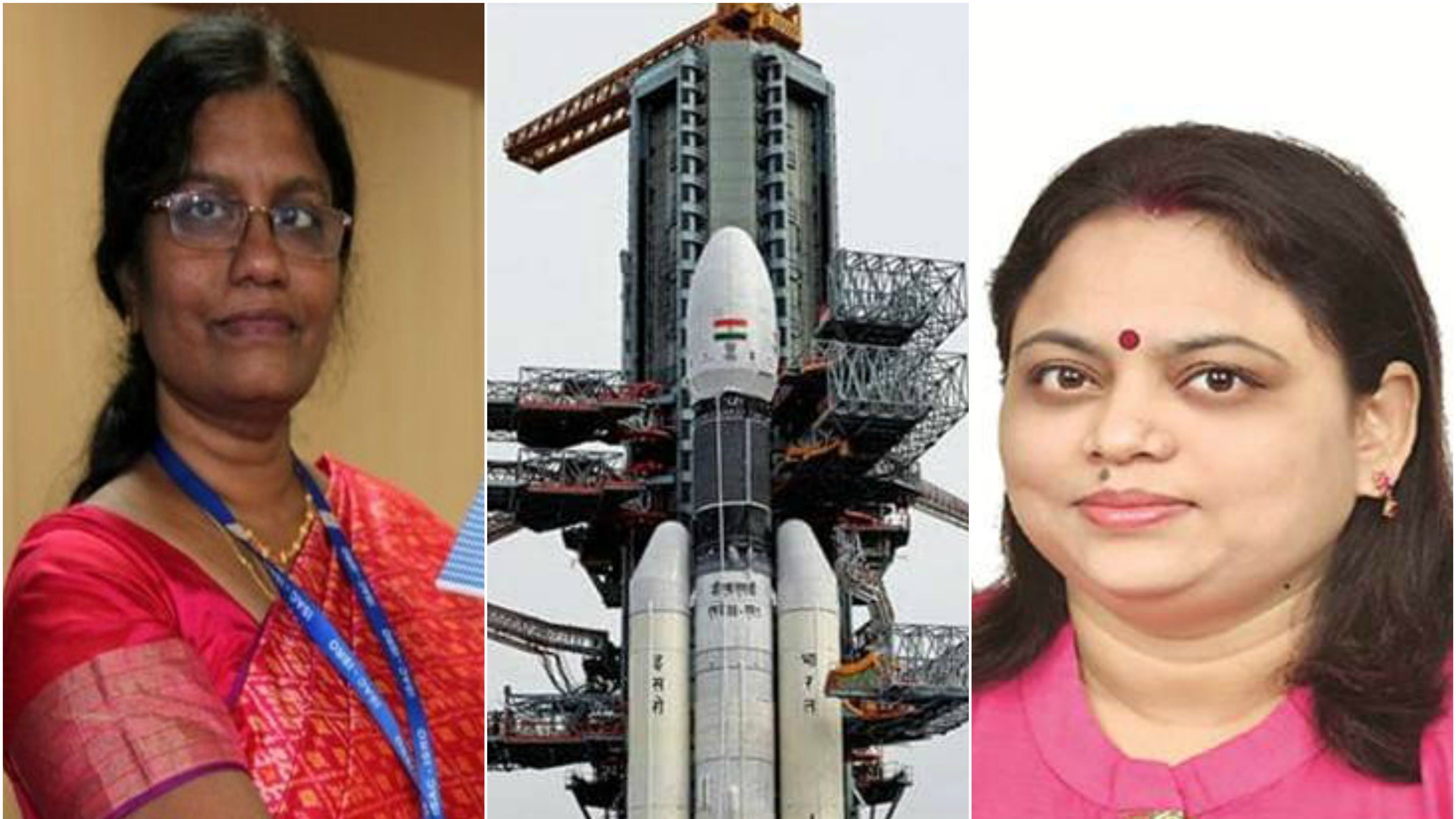Chandrayaan 2, which was aborted last minute last week, citing technical reasons, has been successfully launched at 2:43 pm, on July 22, 2019. Developed by the Indian Space Research Organization (ISRO), Chandrayaan-2 is India’s second lunar exploration mission after Chandrayaan-1, to the Moon’s South Polar Region. Although we will be the first country in the world to explore this region, what makes us even more proud is the fact that this mission is being led entirely by women.
The Women Leaders of the Mission
While Muthayya Vanitha is the Project Director of this Rs. 1000 crore mission, Ritu Karidhal is working as a Mission Director on the same project. Another feather to the cap is that 30% of the team working on this Mission comprises of women as informed by ISRO Chairman K Sivan. This is India’s first space mission to be led by women scientists.
In 2007, Ritu Karidhal received the ISRO Young Scientist Award from late president, Dr. APJ Abdul Kalam. A video of hers released by Google India shows Karidhal boldly advising young girls to follow their dreams or passion, and parents to keep motivating their girls to fulfill their ambitions.
According to UIS data, less than 30% of world’s researchers are women, pursuing careers in STEM. Only 8% of ISRO’s technical and scientific staff comprises of women. Also, no woman has ever headed it since it was founded in 1963. Exactly 5 years back, a picture of women scientists rejoicing in the ISRO’s control room after the MOM had entered Mars’ orbit had gone viral. It had sparked the debate that how women never shared the spotlight, in spite of having an integral role to play in ISRO. But this time, for Chandrayaan 2, our women are not shying away from the spotlight. It is really inspiring to look at the journey of these two women who were brave enough to break the glass ceiling in STEM.
Vanitha Muthayya headed telemetry and telecommand divisions in Digital Systems group, ISRO Satellite Centre (now U R Rao Space Centre), prior to this. She has worked as the deputy project director for TTC-baseband systems, Cartosat-1. She held the position of deputy project director for Oceansat-2, and also Megha-Tropiques satellites. In 2006, she was awarded as the Best Woman Scientist. Even during the launch of Chandrayaan-1, she had been involved in data interpretation. She is said to be an expert in handling of data, with excellent problem solving and team management skills.
Vanitha Muthayya held the position of deputy project director for Oceansat-2, and also Megha-Tropiques satellites. In 2006, she was awarded as the Best Woman Scientist. Even during the launch of Chandrayaan-1, she had been involved in data interpretation.
Ritu Karidhal
Ritu Karidhal was the deputy operations director of Mars Orbiter Mission (MOM), India’s first interplanetary mission. After pursuing her graduation from Lucknow University, Karidhal joined IISc to pursue her masters in aerospace engineering. She has been associated with ISRO since 1997. In 2007, she received the ISRO Young Scientist Award from late president, Dr. APJ Abdul Kalam. A video of hers released by Google India shows Karidhal boldly advising young girls to follow their dreams or passion, and parents to keep motivating their girls to fulfill their ambitions.
She exclaims that science for her, has never been just another subject but more of a passion. She also mentions the support that she has always received from her parents as well as her spouse, which made her pregnancy so successful. Her key task in Chandrayaan 2 is to handle the lunar orbital insertion of the craft. She is also lovingly known as the ‘rocket woman’ of India.
Also read: Charusita Chakravarty: The Chemist Who Fought Sexism In STEM | #IndianWomenInHistory
Breaking the Glass Ceiling

What’s common between both of them is the fact that they are both women in their 40s working with ISRO for over 2 decades. The third thing is the grueling 18 hours work schedule that they have been having, owing to this project and how they have been successfully executing their work within deadlines. Karidhal talks about her rigorous journey in more details at her TEDx talk. So, it would not be wrong for us to say that when the support systems and working conditions are just and fair, not even sky is the limit for feminists like them!
Also read: Nishanti Sudhakar On How Gender Bias Begins At Home | #DesiSTEMinist
References
About the author(s)
She is a Teacher. Hence she is a Leader.
She is a Leader. Hence she is a Teacher.




